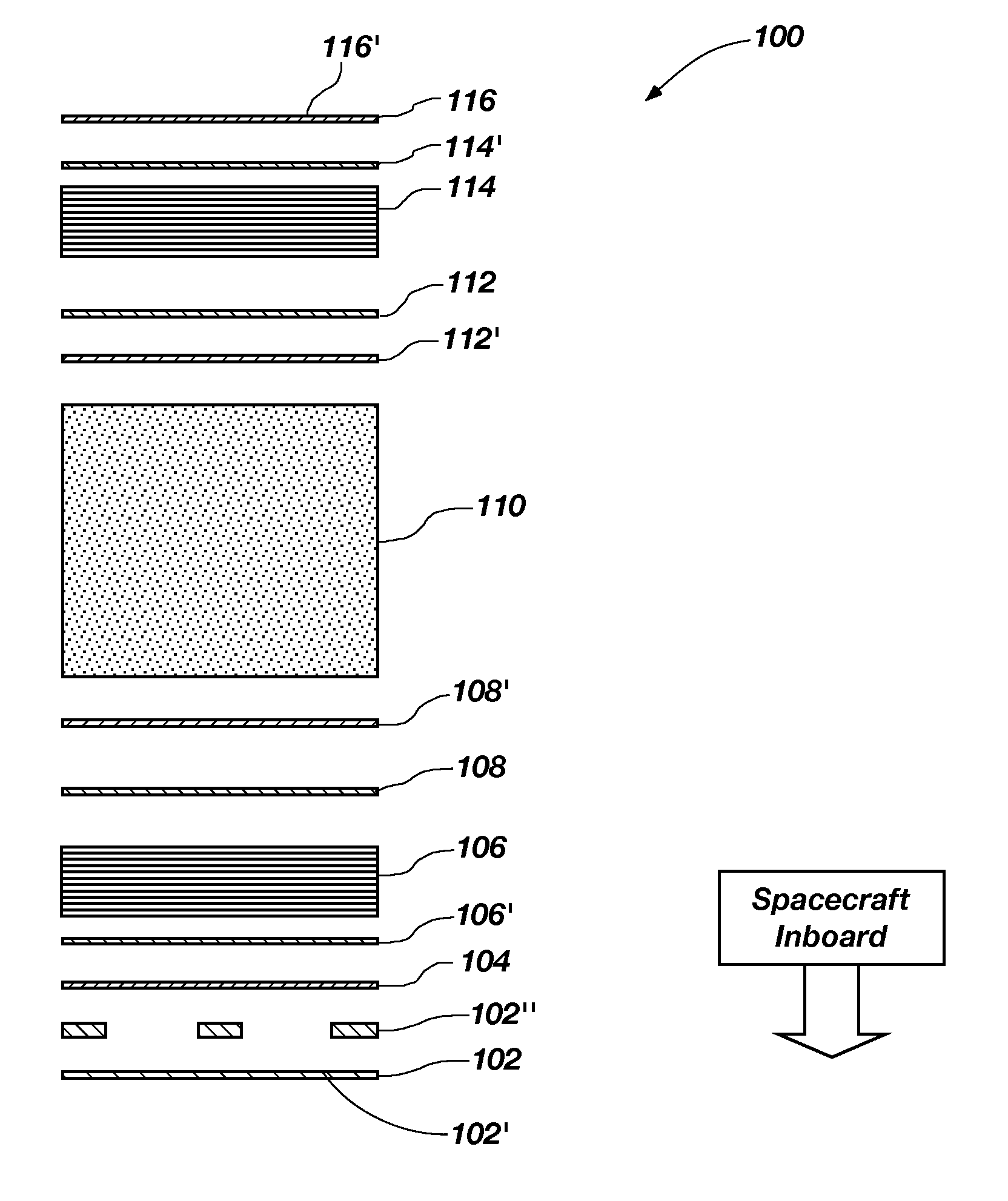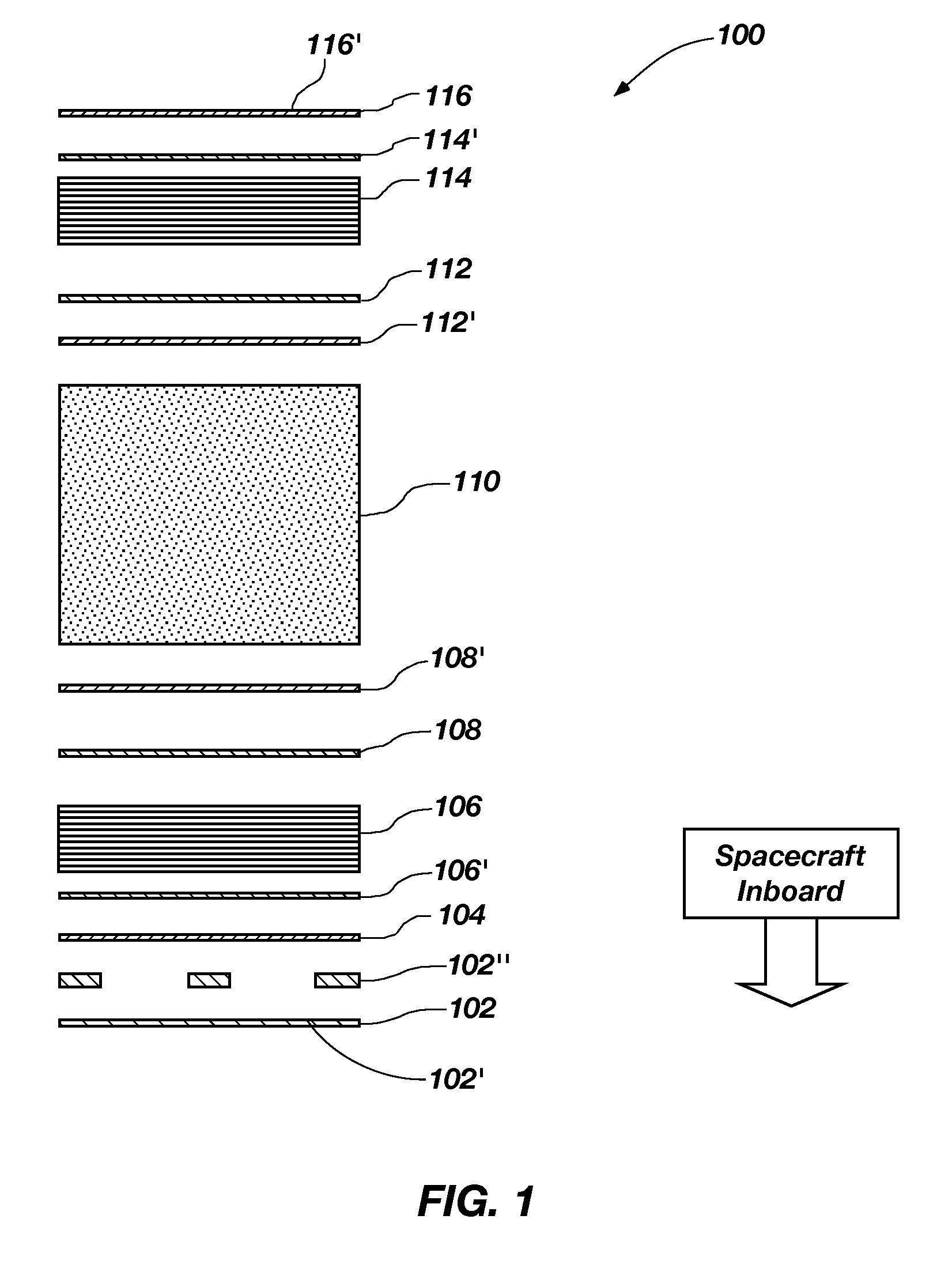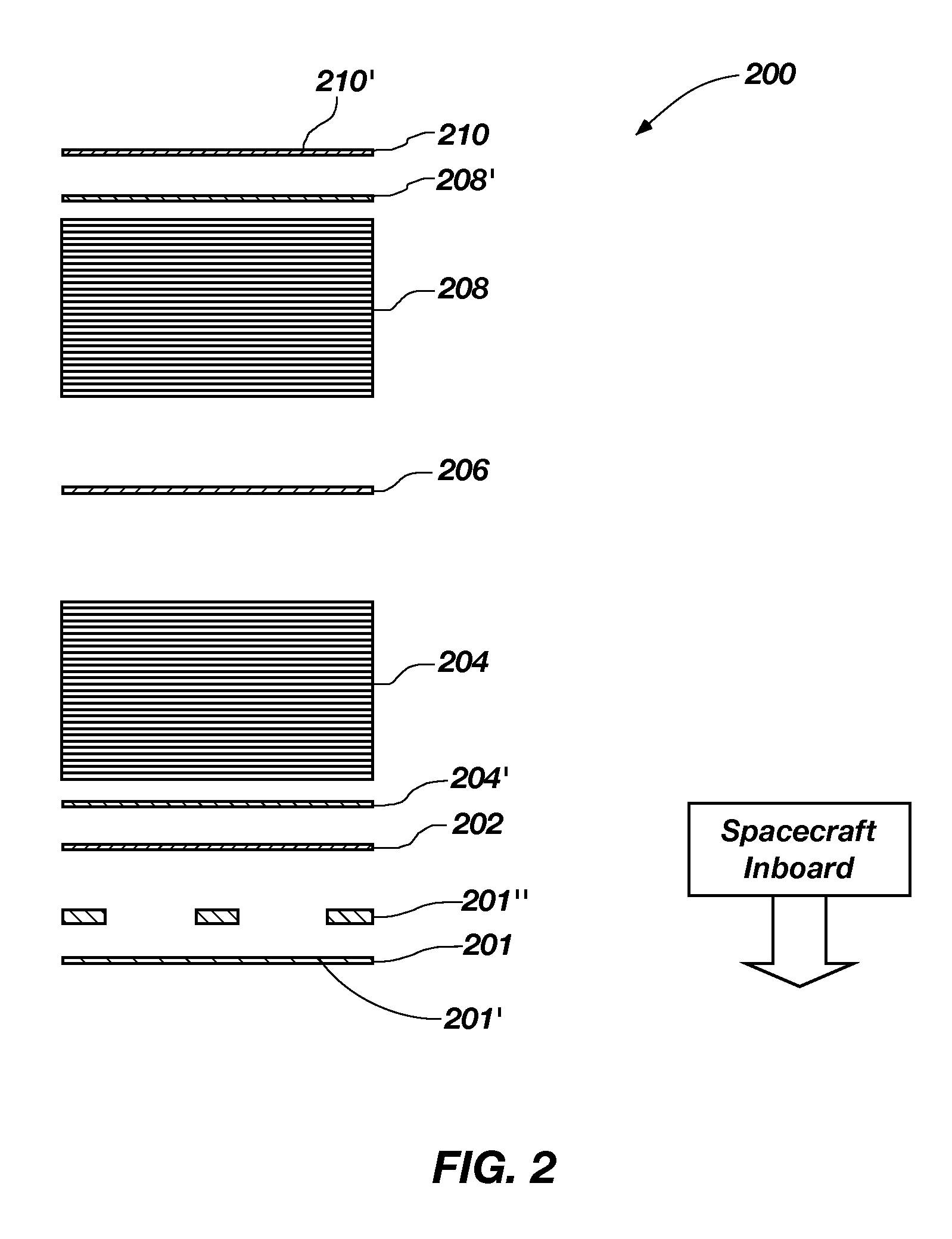Multifunctional radiation-hardened laminate
a radiation-hardened laminate and multi-functional technology, applied in the field of multi-functional composite structures, can solve the problems of imposing weight and instrument line of sight penalties on the craft, damage to the aircraft, and damage to the unprotected spacecraft, and achieves low distortion, high strength, and low weight
- Summary
- Abstract
- Description
- Claims
- Application Information
AI Technical Summary
Benefits of technology
Problems solved by technology
Method used
Image
Examples
first embodiment
[0020]Referring to drawing FIG. 1, the composite structure 100 of the invention for use in forming flat cored panels which are radiation resistant, have high strength to weight, low distortion, and have high rigidity is illustrated in cross-section. The composite structure 100 comprises a laminate including various layers of materials. From the inboard of the spacecraft, a layer 102 of low modulus high density polyethylene comprising a film or fabric optionally hydrogenated and filled with carbon nano-tubes may be used with the layer 102, a metallized layer of aluminum 102′ may be disposed thereon. The thickness of the layer 102 of the high density polyethylene film or fabric and the thickness of the metallized layer of aluminum 102′ thereon may be any desired thickness to be determined by the environment, the loading, and the particular application in which the composite is to be used and is attached by thin epoxy layer 102″.
[0021]Located outboard of the layer 102 is a layer 104 of...
second embodiment
[0036]Referring to drawing FIG. 2, a composite structure 200 of the invention for use in forming an enclosed cylindrical or rhomboid tube-shaped laminate, which is radiation resistant, has high strength to weight, and has high rigidity is illustrated in cross-section. The composite structure 200 comprises a laminate including various layers of materials. From the inboard of the enclosed part, a layer 201 of low modulus high density polyethylene film or fiber fabric may be used, with the layer 201 optionally being hydrogenated and filled with carbon nano-tubes, or having a metallized layer 201′ disposed thereon. The thickness of the layer 201 of the high density polyethylene film or fiber fabric and the thickness of the metallized layer 201′ thereon may be any desired thickness to be determined by the environment, the loading, and the particular application in which the composite is to be used and is attached by a thin epoxy layer 201″.
[0037]Located outboard of the layer 201 is layer...
third embodiment
[0047]Referring to drawing FIG. 3, the composite structure 300 of the invention for use in forming layered flat boron separated laminate panels which are radiation resistant, have high strength to weight, and have high rigidity is illustrated in cross-section. The composite structure 300 comprises a laminate including various layers of materials. From the inboard of the spacecraft, a layer 302 of low modulus high density polyethylene film or fiber fabric may be used, with the layer 302 optionally being hydrogenated and filled with carbon nano-tubes, or having a metallized layer 302′ disposed thereon. The thickness of the layer 302 of the high density polyethylene film or fiber fabric and the thickness of the metallized layer thereon may be any desired thickness to be determined by the environment, the loading, and the particular application in which the composite is too used and is attached by a thin epoxy layer 302″.
[0048]Located outward of the layer 302 is a layer 304 of metallic ...
PUM
| Property | Measurement | Unit |
|---|---|---|
| sonic velocity | aaaaa | aaaaa |
| hyper velocity | aaaaa | aaaaa |
| thermal emissivity | aaaaa | aaaaa |
Abstract
Description
Claims
Application Information
 Login to View More
Login to View More - R&D
- Intellectual Property
- Life Sciences
- Materials
- Tech Scout
- Unparalleled Data Quality
- Higher Quality Content
- 60% Fewer Hallucinations
Browse by: Latest US Patents, China's latest patents, Technical Efficacy Thesaurus, Application Domain, Technology Topic, Popular Technical Reports.
© 2025 PatSnap. All rights reserved.Legal|Privacy policy|Modern Slavery Act Transparency Statement|Sitemap|About US| Contact US: help@patsnap.com



